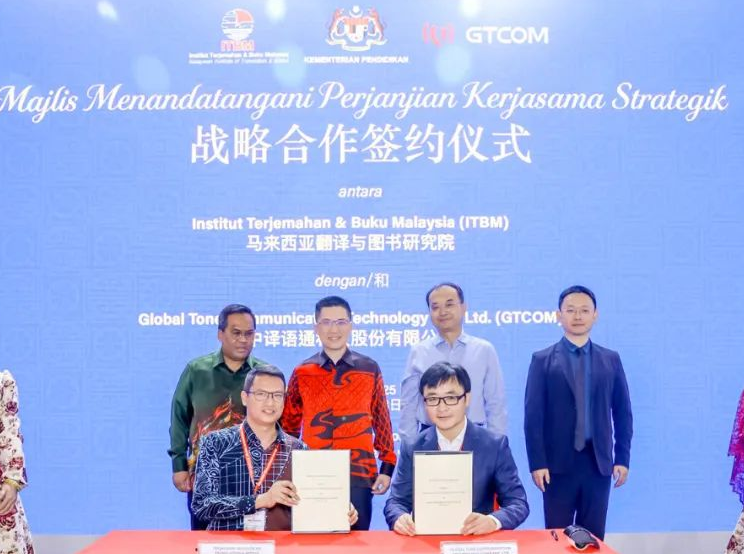China Expands Global Sci-tech Partnerships for Shared Future
China is deepening its commitment to international scientific cooperation, guided by the principles of openness, mutual benefit, and shared progress. With science and technology playing a pivotal role in solving global challenges, China has sci-tech cooperation ties with over 160 countries and regions, has signed 119 intergovernmental sci-tech cooperation agreements, and participates in more than 200 international organizations and mechanisms.
It is also involved in over 60 international big science programs and projects, while academic and professional exchanges thrive at the grassroot level.
Building global platforms
In a physics lab at Stellenbosch University in South Africa, astrophysicist Ma Yinzhe, who is also an academician of South Africa’s Academy of Science, and his Chinese collaborators are busy processing massive volumes of data from the Square Kilometre Array (SKA) telescope. Backed by more than 10 nations, including China and South Africa, the SKA—dubbed the "Giant Eye of Earth"—will be the world's largest radio telescope once it is completed, driving discoveries and breakthroughs in computing, manufacturing, energy, and telecommunications.
China’s own scientific infrastructure is also a magnet for global collaboration. The Five-hundred-meter Aperture Spherical radio Telescope (FAST) features an open data-sharing platform that is accessed by researchers from dozens of countries. As former FAST chief scientist Li Di said, international cooperation has been embedded in FAST's DNA from the outset.
The Commonwealth Scientific and Industrial Research Organisation in Australia helped develop its core components, and since its launch in 2021, scientists from across Europe have joined the platform, forming research networks in cutting-edge areas such as pulsars and fast radio bursts.
In a recent milestone, a joint team led by Tsinghua University and scientists from Italy, Australia, and Germany used data from both FAST and South Africa's MeerKAT array to conduct an advanced pulsar polarization survey of galactic globular clusters. This marks a significant step in international astronomical research.
From exporting BeiDou navigation products to over 140 countries to attracting global scientists to the China Space Station and the International Lunar Research Station, China is increasingly becoming a hub for international science collaboration. Chinese research vessels carry international scholars to explore ocean frontiers, and major global initiatives such as "Deep-time Digital Earth" and "Ocean Negative Carbon Emissions" reflect China’s proactive approach to shared scientific advancement.
Broadening dialogue
In mid-May, a Chinese Academy of Sciences delegation visited Germany to prepare for a roundtable forum in Shanghai. Jointly hosted with the Max Planck Society, the event spotlighted breakthroughs in organoids, bioprinting, and artificial tissues. Longstanding partnerships between the two countries have yielded new models of cooperation, such as youth scientist groups and co-funded research programs.
According to Chen Linhao, minister counselor for science and technology at the Chinese Embassy in Germany, such partnerships are built on reciprocity. "More foreign scholars will come to China because cooperation here is truly mutually beneficial," Chen said.
Across China, platforms such as the Tengchong Scientists Forum in Yunnan are fostering deeper dialogue. Renowned scientists like Professor Dennis Lo Yuk-ming have used the forum to call for integrated strategies against diseases like thalassemia. The forum now serves as a key exchange platform between China and Southeast Asian countries, driving both academic innovation and policy collaboration.
From the Zhongguancun Forum to the World Internet Conference, China offers rich ground for intellectual exchange. Multinational innovation alliances and university-led cooperation projects further demonstrate China's open and inclusive approach to scientific development.
Nurturing innovation networks
Professor Zhang Zhengmao of Northwest A&F University in Shaanxi, northwest China, led a delegation to Kazakhstan in May, where the team quickly launched a wheat and sunflower demonstration project using Chinese seeds. These high-yield varieties have improved food quality and productivity, welcomed by local farmers and consumers alike.
Through the Belt and Road Initiative, China has helped build over 70 joint laboratories in partner countries, advancing cooperation in agriculture, energy, health, and other fields. One flagship effort is the China-Uruguay Soybean Joint Laboratory, launched in 2020. In April, scientists from both countries met in Uruguay to review field tests and genetic breeding efforts, with plans to establish an international platform for soybean research.
A thriving ecosystem
International scientists are increasingly choosing China as their base for long-term research. Spanish ecologist Ahimsa Campos-Arceiz has worked on Asian elephant protection for two decades and now conducts research in the Xishuangbanna Tropical Botanical Garden in Yunnan. On International Biodiversity Day, the botanical garden launched an open biodiversity platform, offering dynamic, traceable data to researchers and the public.
Italian scientist Francesco Faiola praises China's collaborative spirit: "China shares not only technology but also builds local talent. It's a more meaningful form of cooperation."
As China's Ministry of Science and Technology looks to broaden international access to its funding, data, and research infrastructure, it continues to create a fertile environment for global scientific exchange.
"The government's role in science is like spring rain — it nurtures innovation quietly but powerfully," Faiola said.







